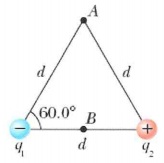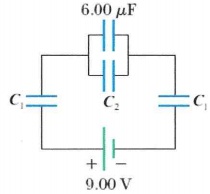Assignment:
Problems:
1. A certain laboratory experiment requires an aluminum wire of length of 26.0 m and a resistance of 3.60 Ω at 20.0°C. What diameter wire must be used? (The resistivity of aluminum at 20.0°C is 2,82 x 10-8 Ω. m.)
2. An electric heater carries a current of 11.0 A when operating at a voltage of 3.30*102 V. What is the resistance of the heater?
3. A person notices a mild shock if the current along a path through the thumb and index finger exceeds 06 μA. Compare the maximum possible voltage without shock across the thumb and index finger with a dry-skin resistance of 5.0 x 105 Ω and a wet-skin resistance of 2000 Ω.
4. Nichrome wire of cross-sectional radius 0.751 mm is to be used in winding a heating coil. If the coil must carry a current of 10.00 A when a voltage of 3.00*102 V is applied across its ends, find the following.
(a) the required resistance of the coil
(b) the length of wire you must use to wind the coil
5. If a certain silver wire has a resistance of 5.00 Ω at 13.0° C what resistance will it have at 27.0°C?
6. Suppose your waffle iron is rated at 0.65 kW when connected to a 1.50*102 V source.
(a) What current does the waffle iron carry
(b) What is its resistance?
7. A uniform electric field of magnitude 406 N/C pointing in the positive x-direction acts on an electron, which is initially at rest. The electron has moved 3.40 cm.
(a) What is the work done by the field on the electron?
(b) What is the change in potential energy associated with the electron?
(c) What is the velocity of the electron?
8. The two charges in the figure below are separated by d = 2.50 cm. (Let q1 = 19.5 nC and q2 = 27.5 nC.)

(a) Find the electric potential at point A.
(b) Find the electric potential at point B, which is halfway between the charges.
9. (a) When a 4.00-V battery is connected to the plates of a capacitor, it stores a charge of 31.0 μC. What is the value of the capacitance?
(b) If the same capacitor is connected to a 10.0-V battery, what charge is stored?
10. Consider the following. (Let C1 = 40.20 μF and C2 = 34.20 μF.)

(a) Find the equivalent capacitance of the capacitors in the figure.
(b) Find the charge on each capacitor.
(c) Find the potential difference across each capacitor.